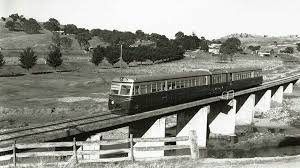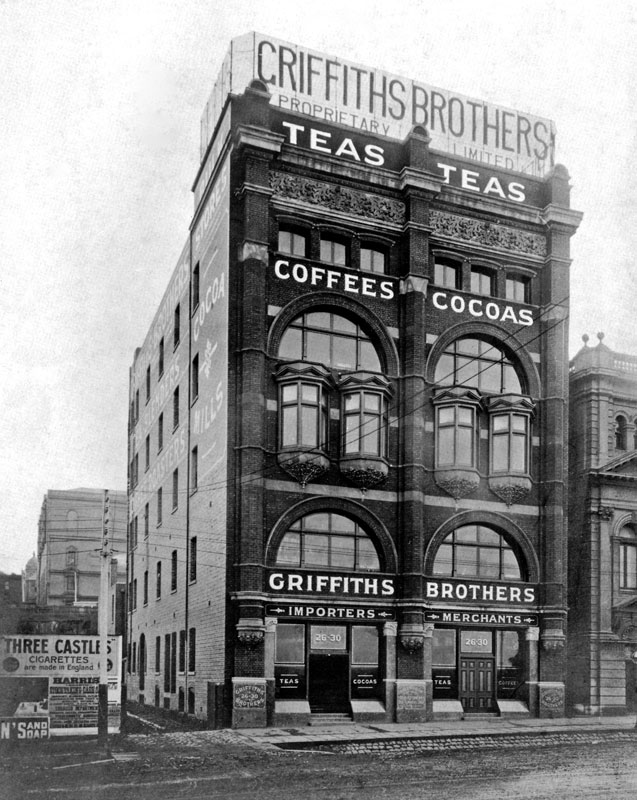‘Steam Travel ’
I remember travelling many times on the train to Hamilton when we were kids. In those days the Ballarat train left from Platform 1 at Flinders St. The curved shaped kiosk, which is still there today, always had an enticing array of ‘goodies' to take on the journey like ‘fruit tingles' and ‘steam roller' lollies. A family could claim a carriage compartment to themselves which had comfortable, lavishly padded green seats, framed pictures of Victoria's landscape on the wall; often of the Grampians, and thoughtfully a flat, canvas covered tin container on the floor which released chemicals inside to make it toasty warm to rest your chilled feet.
With a loud whistle and smokestack rising, we puffed and panted away from the Station with everyone in high spirits. It wasn't a good idea to put your head out of the window as you were liable to cop pieces of burnt coal ash from the engine.
By the time we reached Ballarat we were ready for a stretch and a welcome visit to the historic cafeteria which sold hot pies and delicious, vanilla custard slices. Incidentally, t he Ballarat Railway Station Refreshment Room was restored to its 1890s heritage after it was almost completely destroyed by a fire in the 1990s! It used to intrigue me in the old days to notice that the Station always had a sombre look about it with it's dimly lit area for the passengers to wait, looking out at the exterior walls and roof of the station which were coated black from the exhaust of the steam engines, especially across the archway entrance of the station.

Content with a ‘feed', we then proceeded about 50 miles on to Ararat Railway Station where a two-carriage yellow and blue motor train was ready to take us to Hamilton. Both carriages were attached to the diesel motor in the middle which powered it. We tried to scramble on board to gain the two prized seats at the front on the left-hand side and the driver entombed in his small space to the immediate right with the door pulled securely behind him. All the seats faced forward and ahead you had a bird's eye view of the track and a beautiful panorama of the countryside.

We pulled out of Ararat in a large gentle arc to the right heading off to the Western District. When we reached top speed, the wind created an eerie whistle along the sides of the carriage. All too soon we came to Hamilton Railway Station where Uncle Tommy was waiting to take us in his Blue Holden FJ the last 20 minutes to the farm at Coleraine. Later, Kev and I saved him the trouble of coming in to get us by taking the Ansett Bus which was also the founding location where Reginald Ansett started Ansett Airways in 1935 but unfortunately went into receivership in 2001.

On the way back to Melbourne every so often, we'd see white signs with blue Capitalized writing attached to the fences or on the sides of buildings which read e.g. 157 Miles to Griffiths Bros. Teas. After all those years of seeing these signs I never tasted their tea and never saw where the building was located as the signs stopped about 20 miles out from Melbourne. In hindsight, I guess they may have been souvenired. In the ticket area of the Ballarat Railway Station there is one of these signs displayed on the wall today.

Interestingly the Griffiths brothers built up one of the great tea, coffee and cocoas importation firms in Australia and it was located at 28 Flinders Street, Melbourne, with branches in at least 4 other Australian States (N.S.W., Queensland, South and Western Australia), in addition to the main base in Melbourne, Victoria. This company not only advertised in Western Victoria, but their signs were scattered widely along many train lines even as far north as Sydney letting the public know where you could have a refreshing cup of tea.

“The company of Griffiths Bros Limited (1898-1960s) was registered in Victoria in 1898 as Griffiths Brothers Pty Ltd. In the 1960s the business was taken over by the Robur Tea Company Limited. James Griffiths migrated to Australia in 1873 and founded the successful tea business of the same name.” He and his wife " nestled in the foothills of Mount Dandenong (33km to the east of Melbourne at the Basin is a mixture of outer suburban and rural landscapes. Land purchases in The Basin began in 1866. James Griffiths (Tea Merchant famous for ‘Griffith Teas) lived on the property Ferndale in the late nineteenth/early twentieth century. A leading local figure in The Basin, Griffiths was killed with his wife and two others at the Bayswater railway crossing in (December) 1925".
In August 1965 when I was 16, I saw the last steam train leave Ringwood Railway Station bound for Warburton. It was the end of an era when transportation ‘almost lived and breathed.'
